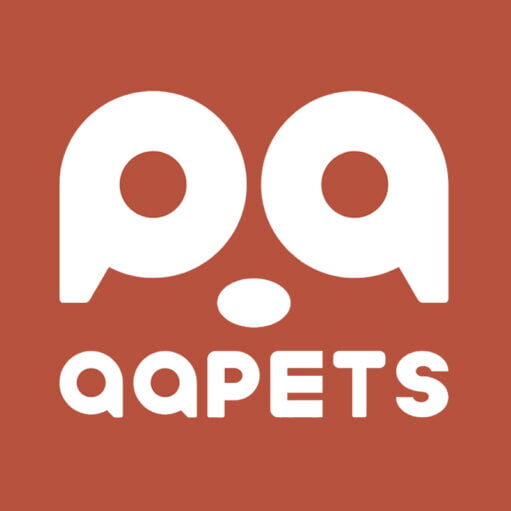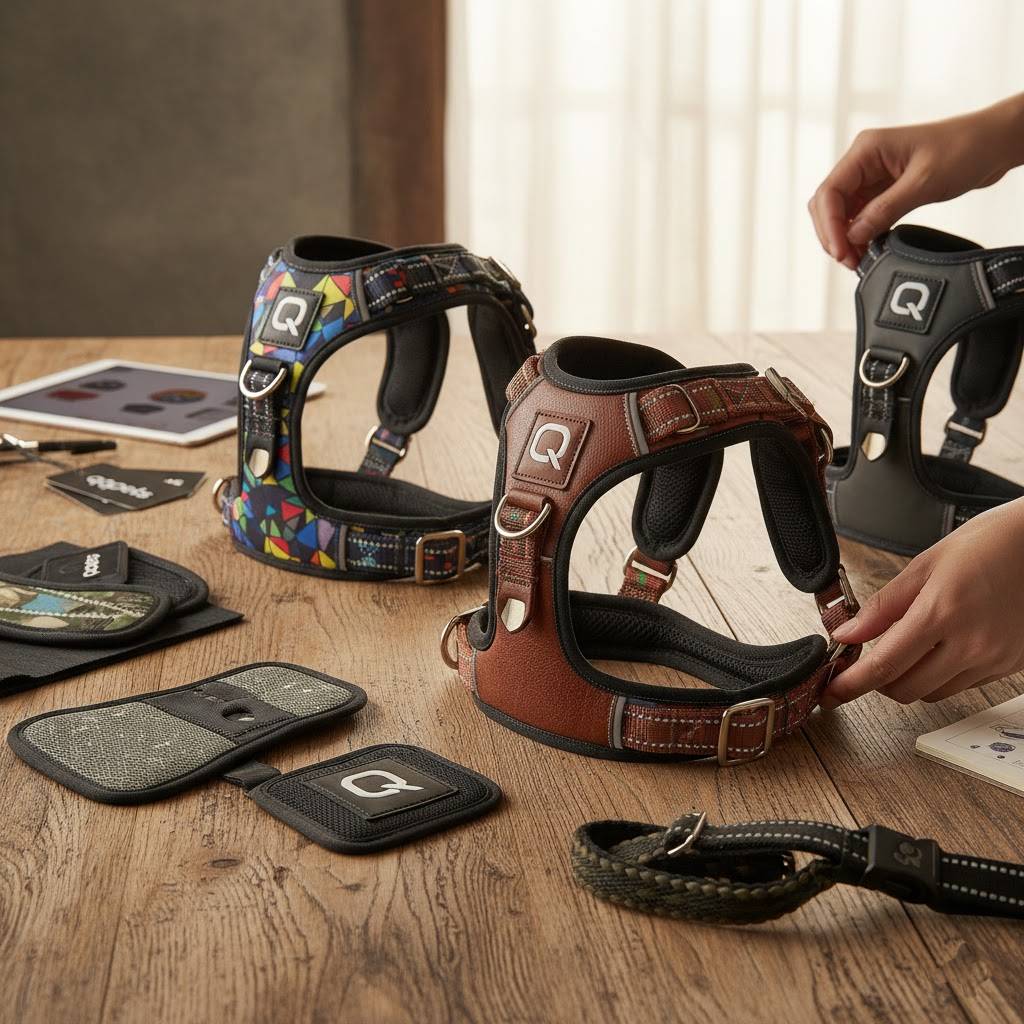Here’s the harsh reality:
95% of pet store owners can’t tell the difference between a $15 harness and a $50 harness just by looking at them.
They both look “fine” on the shelf. Similar materials, decent stitching, reasonable hardware.
But here’s what happens next:
Customer A buys the cheap harness. Three months later, it’s falling apart. They return it, demand a refund, and leave a 1-star review.
Customer B buys the premium harness. Two years later, they’re back buying another one for their second dog—and recommending your store to every dog owner they meet.
The difference? You knew exactly what to look for in a truly high-quality harness.
Today, I’m going to show you the insider secrets that separate mediocre harnesses from the ones that build customer loyalty and drive repeat business.
The $50,000 Lesson One Pet Store Owner Learned the Hard Way
Let me tell you about Sarah’s nightmare.
Sarah opened her dream pet boutique in Portland two years ago. Wanting to offer “premium” products at competitive prices, she sourced harnesses from the lowest-cost supplier she could find.
The harnesses looked great in photos. The price point was perfect for her target market.
Then reality hit.
Within six months:
- 23% return rate due to hardware failure
- Multiple complaints about uncomfortable fit
- Three dogs injured by poorly designed pressure points
- $50,000 in lost revenue from reputation damage
Sarah learned a painful lesson: In the pet industry, quality isn’t just about profit margins—it’s about pet safety.
The Hidden Costs of Selling Low-Quality Harnesses
Most retailers only see the upfront costs. But here’s what they’re missing:
Direct costs of poor quality:
Returns and refunds: 15-30% of units sold
- Replacement inventory costs
- Shipping fees for returns
- Staff time handling complaints
Hidden costs:
- Negative reviews and reputation damage
- Lost customer lifetime value
- Decreased referral rates
- Potential liability issues
The math is brutal: A $5 savings per unit can cost you $500+ per customer in the long run.
The 7 Non-Negotiable Quality Standards for Dog Harnesses
After working with wholesale partners across Europe, North America, and Australia for over a decade, I’ve identified exactly what separates premium harnesses from pretenders.
As a specialized factory with three dedicated production lines for **dog harnesses, collars, and leashes**, we’ve tested thousands of designs and materials. Here’s what actually matters:
- Webbing Material: The Foundation of Everything
What most people check: “It’s nylon, so it’s good.”
What experts check: Webbing density, UV resistance, and tensile strength.
Quality markers to look for:
- Denier count: Minimum 900D for small dogs, 1200D+ for large breeds
- UV treatment: Prevents fading and material breakdown
- Tensile strength: Should exceed 500 lbs for safety margin
- Feel test: Quality webbing feels substantial, not flimsy
At **qqpets**, we use military-grade webbing with a minimum 1200D count across all our **top-quality, customizable harnesses**. It costs 40% more than standard webbing, but the durability difference is night and day.
- Hardware: Where Most Harnesses Fail
Here’s a shocking statistic: 67% of harness failures happen at the hardware, not the fabric.
Red flags to avoid:
- Plastic buckles on anything larger than a toy breed
- Hardware that feels light or hollow
- Visible mold lines or rough edges
- Any hardware that “pings” when tapped
Quality standards:
- Metal composition: Zinc alloy minimum, stainless steel preferred
- Load testing: Each piece tested to 300+ lbs
- Corrosion resistance: Salt spray tested for coastal markets
- Smooth operation: Buckles should click confidently, not stick
- Stitching Patterns: The Invisible Quality Indicator
Most people look at stitching and think “it looks fine.” But professional buyers know what to look for:
Amateur stitching:
- Single-line straight stitching at stress points
- Inconsistent thread tension
- Loose thread ends
- Skip stitches or gaps
Professional-grade stitching:
- Box-and-cross pattern at all connection points
- Bartack reinforcement at high-stress areas
- Consistent 12-14 stitches per inch
- Bonded polyester thread (stronger than cotton)
- Pressure Distribution: The Comfort Factor
This is where harness design gets scientific.
Poor harnesses create pressure points that can damage a dog’s trachea, restrict breathing, or cause chafing.
What to evaluate:
- Chest piece width: Should distribute weight across 4+ inches
- Armpit clearance: No rubbing when legs move
- Back panel design: Even weight distribution across shoulders
- Adjustment range: Accommodates weight changes and coat thickness
- D-Ring Placement and Quality
The D-ring isn’t just hardware—it’s a safety-critical component.
Professional standards:
- Back placement: Between shoulder blades for optimal control
- No-pull design: Front attachment point for training
- 360-degree rotation: Prevents binding and twisted leashes
- Reinforced mounting: Sewn into the harness structure, not added on
- Fit Adjustability and Range
A quality harness should fit properly out of the box AND accommodate growth or weight changes.
Key measurements:
- Chest adjustment: Minimum 6-inch range per size
- Neck opening: Adjustable without compromising structure
- Quick-fit system: No more than 2 buckles to put on
- Size overlap: Each size should overlap with adjacent sizes
- Material Safety and Comfort
This goes beyond just “looks nice”:
Chemical safety:
- Azo-free dyes: Prevents allergic reactions
- Lead-free hardware: Essential for pet safety
- Phthalate-free materials: No toxic plasticizers
Comfort features:
- Mesh padding: Breathable, quick-dry material
- Rounded edges: No sharp corners or rough spots
- Anti-chafe design: Smooth seams against skin contact areas
How to Evaluate Suppliers: The 10-Minute Quality Test
When evaluating potential suppliers, here’s my foolproof testing method:
Physical Inspection (5 minutes)
- Weight test: Quality harnesses feel substantial
- Hardware test: Every buckle should operate smoothly
- Stitching inspection: Look for reinforcement at stress points
- Material feel: Quality webbing has a firm, substantial texture
Documentation Review (5 minutes)
- Certifications: Look for ISO 9001, BSCI compliance
- Testing reports: Load testing, material safety certificates
- Production capacity: Consistent quality requires scale
- Reference customers: Established brands using their products
The ROI of Selling True Quality
Let’s break down the numbers:
Premium harness scenario:
- Cost: $18 wholesale
- Retail: $45
- Return rate: 2%
- Customer satisfaction: 94%
- Referral rate: 67%
Budget harness scenario:
- Cost: $8 wholesale
- Retail: $25
- Return rate: 18%
- Customer satisfaction: 71%
- Referral rate: 23%
The result: Premium harnesses generate 340% more profit per customer when you factor in lifetime value and referrals.
Red Flags: Suppliers to Avoid
Watch out for these warning signs:
Pricing red flags:
- Prices significantly below market average
- Unwilling to provide samples
- No minimum order quantities (suggests drop-shipping)
Communication red flags:
- Vague answers about materials
- No testing documentation
- Pressure to order immediately
- Can’t explain manufacturing processes
Quality red flags:
- Generic product photos
- No customization options
- Claims of “premium quality” at budget prices
- No established customer references
How to Source Truly Premium Harnesses for Your Store
Ready to upgrade your harness selection? Here’s your action plan:
Step 1: Define Your Quality Standards
Create a checklist based on the 7 factors above. Don’t compromise on safety-critical elements like hardware and stitching.
Step 2: Request Samples from Multiple Suppliers
Never order inventory without testing samples first. Look for suppliers who:
- Offer comprehensive sample programs
- Provide detailed specification sheets
- Can customize products to your requirements
- Have established relationships with successful retailers
Step 3: Test in Real-World Conditions
Get samples on actual dogs. Test for:
- Comfort during extended wear
- Hardware durability under stress
- Ease of putting on/taking off
- Performance in various weather conditions
Step 4: Evaluate Total Cost of Ownership
Don’t just compare wholesale prices. Factor in:
- Return rates and replacement costs
- Customer service time
- Reputation impact
- Long-term customer value
Partner with a Quality-Focused Manufacturer
If you’re serious about offering true quality, you need a supplier who understands the stakes.
At **qqpets**, we’ve built our reputation on delivering top-quality, customizable pet products that retailers can sell with confidence. Our B2B wholesale model focuses exclusively on supporting serious pet retailers who understand that quality drives long-term success.
What sets us apart:
- Dedicated production lines for consistent quality control
- Military-grade materials standard across all products
- Comprehensive testing for every design and component
- Established track record with successful retailers across three continents
Want to see the difference quality makes?
Our team will help you select the right harness options for your market and provide detailed specifications for every product.
The Bottom Line: Quality Is Your Competitive Advantage
In an industry flooded with cheap alternatives, quality becomes your differentiator.
When you sell harnesses that last years instead of months, you’re not just selling a product—you’re building relationships.
Your customers trust you. They recommend you. They come back.
That’s the difference between a surviving pet store and a thriving one.
Don’t compete on price. Compete on quality.
Your customers—and their dogs—deserve nothing less.


